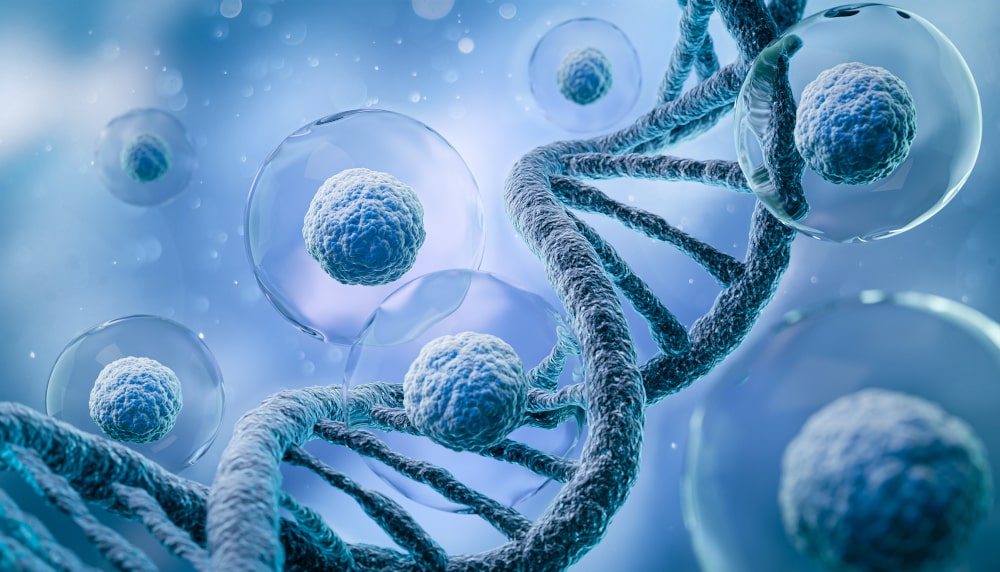- December 20, 2023
Share This

At Canadian Fertility Consultants, we know that going on the surrogacy journey can spark many questions about the links between the surrogate and the baby. Some people wonder if the surrogate mother and the baby share DNA, and how surrogacy affects the child’s identity. In this article, we will answer these questions. To better understand the importance of genetic connections in surrogacy, we will first need to unravel the complex relationships involved. Let’s dive into the basics: Does a surrogate mother share DNA with the baby? This is more than just a question about genetics; it’s about the real connection between the biological mother and the baby.
Biological Mother vs. Surrogate: Defining Roles
Understanding the roles of the biological mother and the surrogate mother is fundamental to the surrogacy process. The term biological mother typically refers to the woman whose genetic material contributes to the creation of the child. This may involve the use of the intended mother’s eggs, or donor eggs, depending on the specifics of the surrogacy arrangement. In contrast, the surrogate mother is the woman who carries and nurtures the developing embryo in her uterus.
While the biological mother provides the genetic foundation, the surrogate’s role is to offer a nurturing environment for the developing fetus.
DNA Connection: Understanding Genetics
Let’s look at the intricacies of DNA connection and how genetics shape the bond between parent and child. DNA, a complex molecule known as deoxyribonucleic acid, is a genetic roadmap determining our distinct traits. To transfer DNA from parent to child involves a combination of the mother’s and father’s genetic material. This process typically begins with the fusion of the mother’s egg and the father’s sperm during fertilization, creating a unique genetic code that influences the child’s characteristics, such as eye color and personality.
Now, let’s address another common question. When do the mother and baby share a blood supply? This sharing occurs during pregnancy, facilitating the exchange of nutrients and oxygen essential for the baby’s growth. Additionally, questions arise about the father’s DNA lingering in the mother. While the baby inherits genetic material from both parents, the father’s DNA doesn’t persist in the mother’s body after conception.
The Genetics of a Baby in the Surrogacy Process
People often wonder if a baby can have DNA from two mothers. This scenario is more likely in traditional surrogacy, where the surrogate uses her own eggs. However, with gestational surrogacy, the surrogate’s genetic contribution is eliminated, and the embryo is created through in vitro fertilization (IVF) using the intended parents’ genetic material. This ensures that the biological connection remains exclusively with the intended parents, distinguishing the roles of the biological mother and the surrogate mother.
In the context of surrogacy, one might wonder if a baby gets anything from a surrogate mother. In gestational surrogacy, the surrogate’s role is not to contribute genetic material but to provide a nurturing environment for the growing fetus. This ensures that the baby exclusively inherits DNA from the biological parents, addressing concerns about the surrogate mother sharing DNA with the baby.
Surrogacy and Child Development: How Does It Affect the Child?
Let’s discuss surrogacy’s impact on a child’s development, it’s crucial to consider both research findings and personal experiences. Studies suggest that children born through surrogacy generally fare well emotionally and psychologically, comparable to those born through other means. The key lies in fostering an environment of openness and communication within the family.
Understanding how surrogacy affects a child involves looking at various factors. Transparency about the surrogacy process contributes to a positive narrative, helping the child grasp their unique origin story. The child’s emotional development is significantly influenced by their relationships with both biological and social parents. When handled with care and a focus on the child’s well-being, surrogacy can provide a supportive environment for healthy growth and development. As societal attitudes continue to evolve, nurturing a loving and supportive family remains paramount for a child’s positive developmental journey, regardless of the method of conception.
What Will My Baby Look Like? Genetics and Appearance
A child’s appearance is primarily determined by the genetic material inherited from the biological parents, specifically the combination of the mother’s eggs and the father’s sperm. In the case of gestational surrogacy, where the surrogate provides a nurturing environment but not her genetic material, the child’s features are influenced exclusively by the biological parents. The surrogate’s DNA does not play a role in determining the baby’s appearance, emphasizing the significant impact of the biological parents’ genetic contribution on the child’s physical traits. This clarification helps alleviate concerns and provides insight into the fascinating interplay between genetics and the visual characteristics that shape a child’s unique appearance.
Father’s Role in Surrogacy
To understand the father’s role in surrogacy we have to consider the intricacies of genetic contribution and understand the journey of his DNA. A common question often arises: Does the father’s DNA stay in the mother? While the father’s genetic material is crucial in the conception process, his DNA does not persist in the mother’s body after fertilization. Once the sperm fertilizes the egg and forms an embryo, the father’s DNA integrates with the mother’s genetic material, setting the stage for the child’s unique genetic code. However, the father’s DNA doesn’t linger in the mother’s system beyond this point, marking a distinctive moment in the surrogacy process.
The significance of the father’s genetic contribution cannot be overstated. His DNA plays a fundamental role in shaping the child’s genetic makeup, influencing traits such as eye color, hair color, and various other characteristics. In the context of surrogacy, whether through traditional or gestational methods, the father’s genetic material remains a crucial component, ensuring that the child inherits a blend of traits from both parents.
Navigating the Genetic Landscape
In summary, learning about genetic connections in surrogacy is an important step in the process. As we unravel the roles of the biological and surrogate mothers, it becomes evident that the genetic link between the surrogate and the baby is minimal, particularly in gestational surrogacy arrangements where the surrogate provides a nurturing environment but not her genetic material. This understanding dispels a few common myths and sheds light on the dynamics that shape the identity of a child born through surrogacy.
For those considering the decision to become a surrogate, or seeking more answers to common surrogacy questions we invite you to contact us for more information. Applying to be a surrogate involves understanding the profound impact of genetic connections and contributing to the emotionally rewarding journey of helping to build a family.
Read the Latest
About Us
Canadian Fertility Consulting is Canada’s premier surrogacy agency. Each year, we guide hundreds of parents create or expand their family through surrogacy and egg donation.



